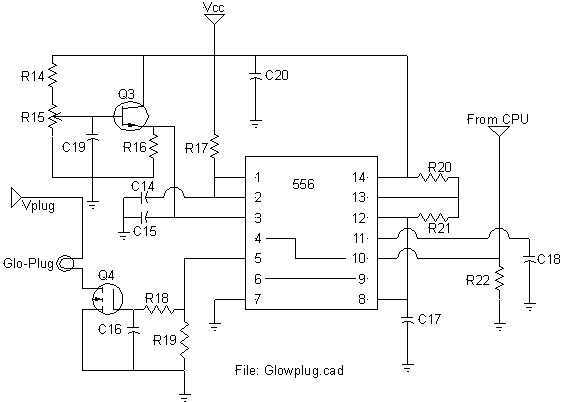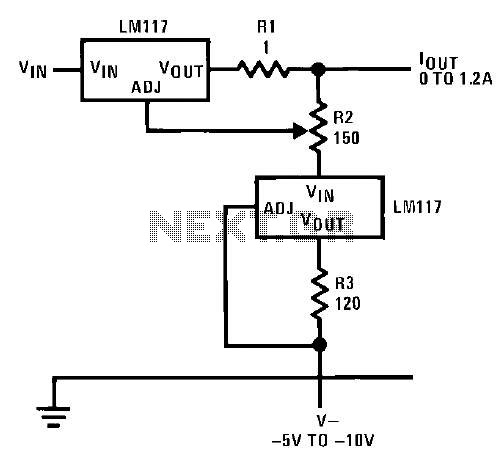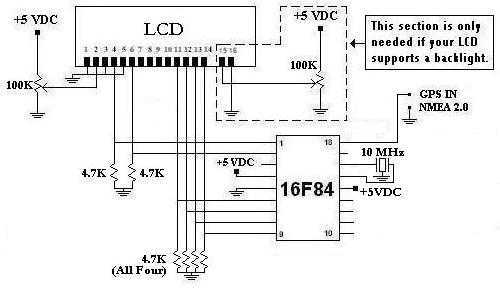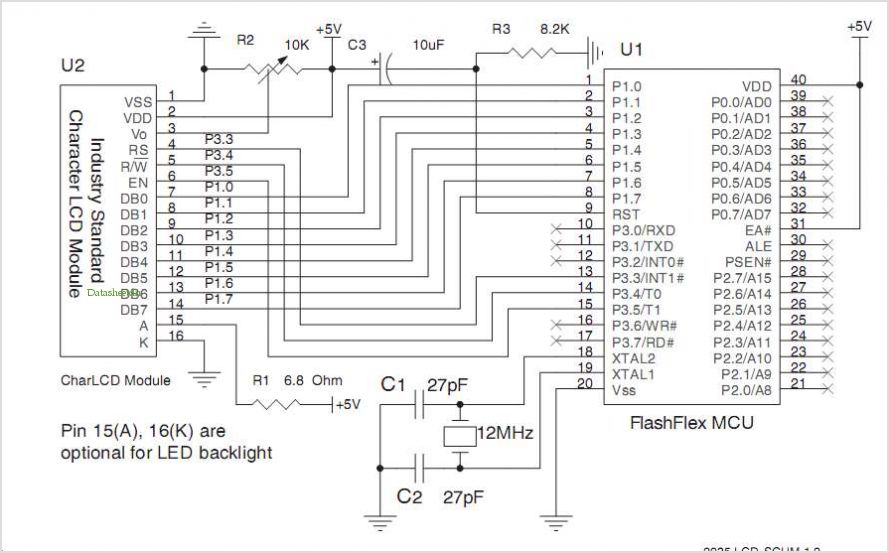
Adjust the Contrast of a HD44780 LCD
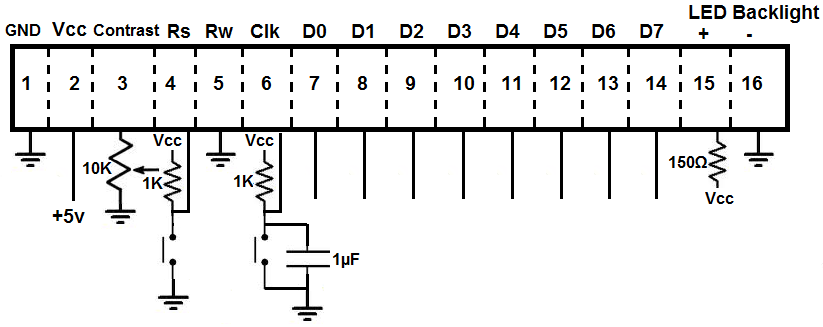
The 10KG potentiometer allows for the adjustment of screen contrast from dark to bright. When the potentiometer is set near 0G, the screen appears very dark. As the potentiometer is turned up to 10KG, the screen brightness increases.
The 10KG potentiometer is a variable resistor that enables users to modify the resistance in an electronic circuit, thereby controlling the voltage and current flowing to the display. This functionality is essential in applications where visual output needs to be adjusted for optimal visibility based on ambient lighting conditions or user preference.
In a typical circuit configuration, the potentiometer is connected in a voltage divider arrangement. The two outer terminals of the potentiometer are connected to a voltage source (Vcc) and ground (GND), while the middle terminal, known as the wiper, provides a variable output voltage. This output voltage is then fed into the contrast control input of the display module, which could be an LCD or OLED screen.
When the potentiometer is at its lowest setting (0G), the wiper is positioned close to the ground terminal, resulting in a minimal output voltage. This low voltage causes the screen to display a darker image. Conversely, as the potentiometer is adjusted towards its maximum value (10KG), the wiper moves closer to the Vcc terminal, increasing the output voltage. This increase results in higher current flow through the display, leading to a brighter screen.
The choice of a 10KG potentiometer is significant as it provides a suitable range for fine-tuning the contrast without excessive voltage drop, ensuring that the display remains within its operational parameters. Additionally, the linear taper of the potentiometer allows for smooth and gradual changes in brightness, enhancing user experience.
In summary, the 10KG potentiometer serves as a crucial component in controlling the contrast of a display, facilitating adjustments that cater to user needs and environmental conditions. Proper implementation of this component in electronic schematics will ensure optimal performance and user satisfaction.With the 10KG potentiometer, you can vary the contrast from dark to bright. When the potentiometer is near 0G , the screen will be very dark. As you turn the potentiometer up to 10KG , the screen will become brighter. 🔗 External reference
The 10KG potentiometer is a variable resistor that enables users to modify the resistance in an electronic circuit, thereby controlling the voltage and current flowing to the display. This functionality is essential in applications where visual output needs to be adjusted for optimal visibility based on ambient lighting conditions or user preference.
In a typical circuit configuration, the potentiometer is connected in a voltage divider arrangement. The two outer terminals of the potentiometer are connected to a voltage source (Vcc) and ground (GND), while the middle terminal, known as the wiper, provides a variable output voltage. This output voltage is then fed into the contrast control input of the display module, which could be an LCD or OLED screen.
When the potentiometer is at its lowest setting (0G), the wiper is positioned close to the ground terminal, resulting in a minimal output voltage. This low voltage causes the screen to display a darker image. Conversely, as the potentiometer is adjusted towards its maximum value (10KG), the wiper moves closer to the Vcc terminal, increasing the output voltage. This increase results in higher current flow through the display, leading to a brighter screen.
The choice of a 10KG potentiometer is significant as it provides a suitable range for fine-tuning the contrast without excessive voltage drop, ensuring that the display remains within its operational parameters. Additionally, the linear taper of the potentiometer allows for smooth and gradual changes in brightness, enhancing user experience.
In summary, the 10KG potentiometer serves as a crucial component in controlling the contrast of a display, facilitating adjustments that cater to user needs and environmental conditions. Proper implementation of this component in electronic schematics will ensure optimal performance and user satisfaction.With the 10KG potentiometer, you can vary the contrast from dark to bright. When the potentiometer is near 0G , the screen will be very dark. As you turn the potentiometer up to 10KG , the screen will become brighter. 🔗 External reference
